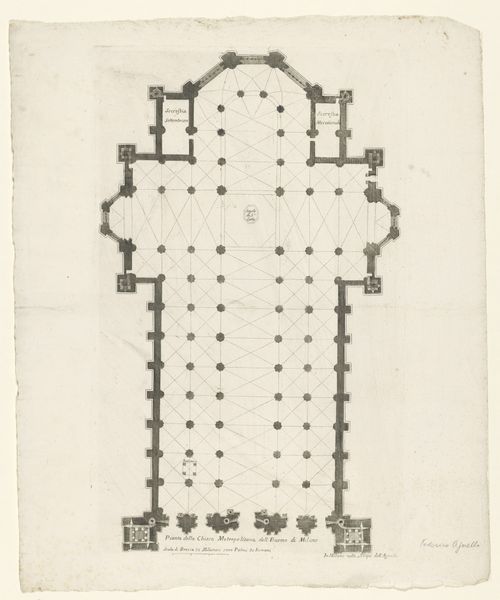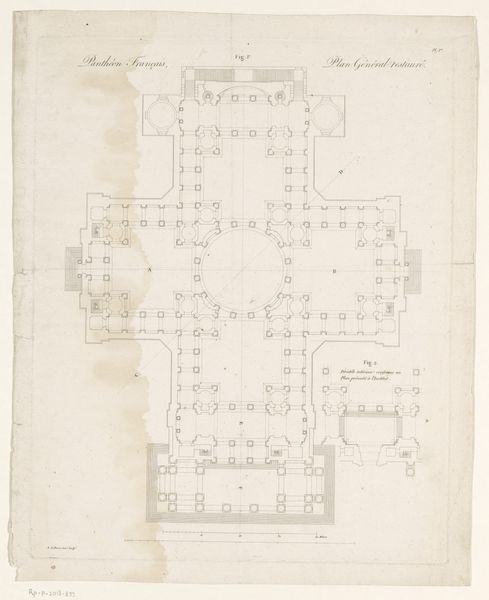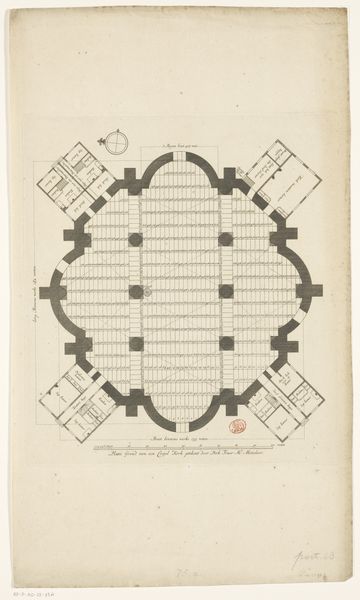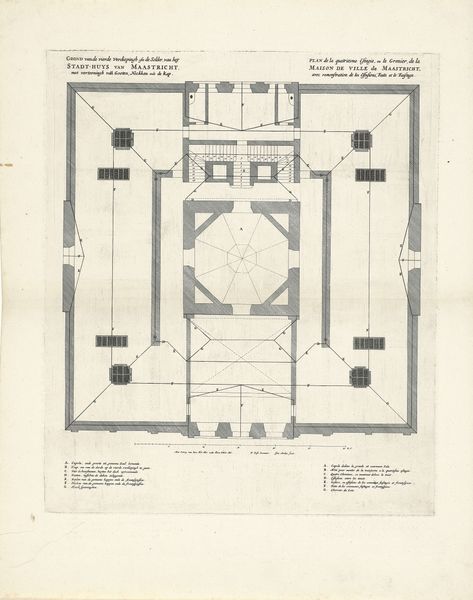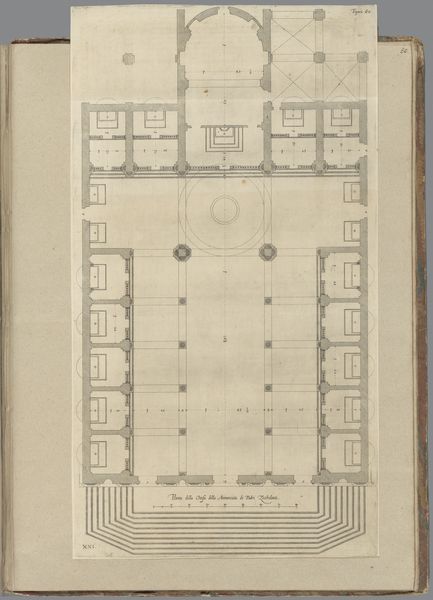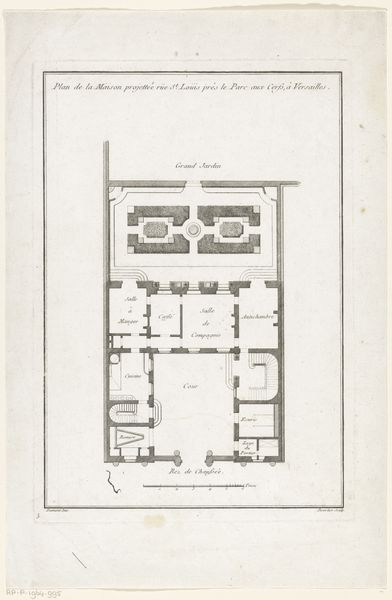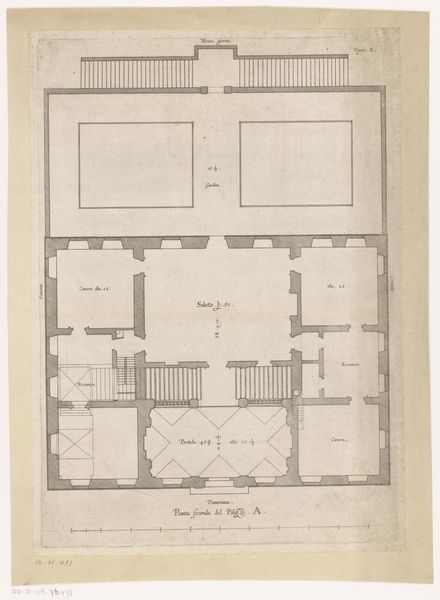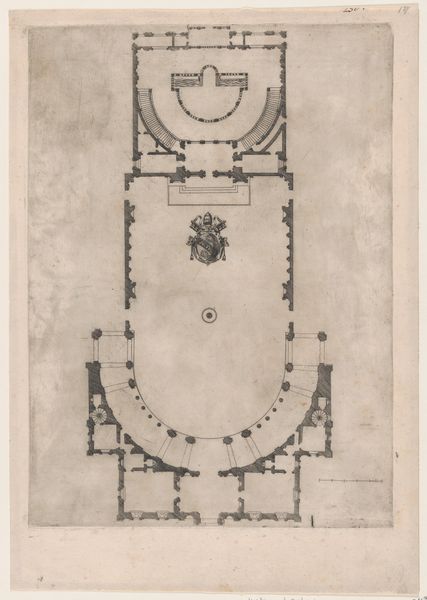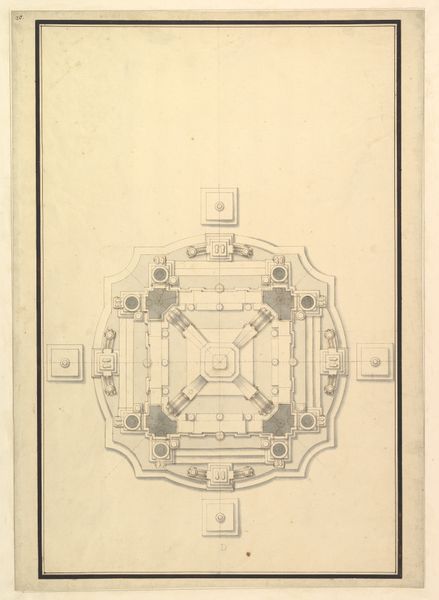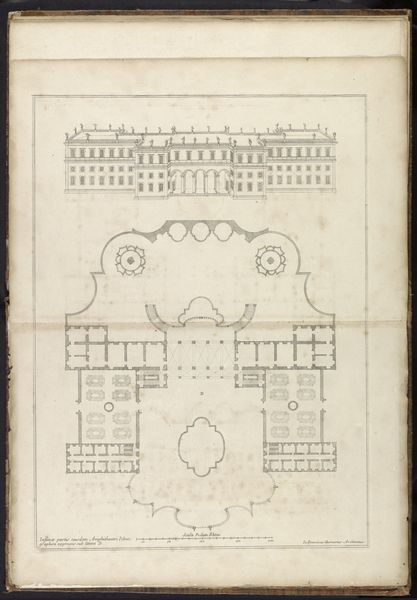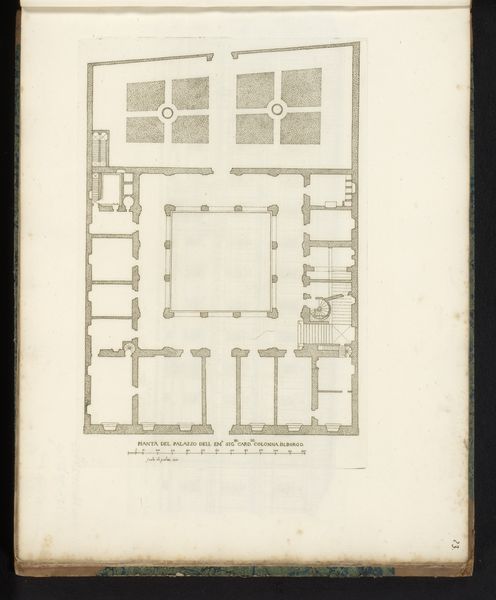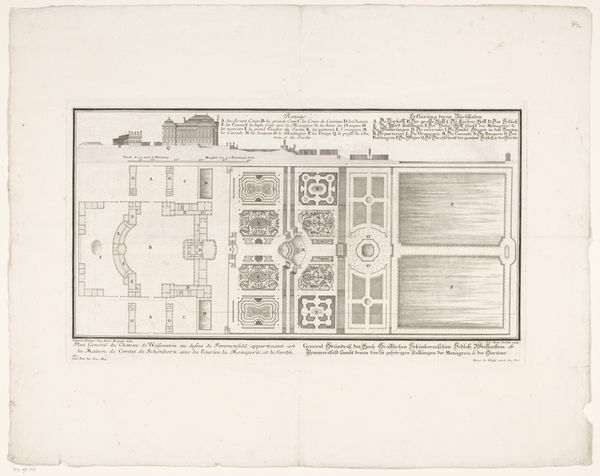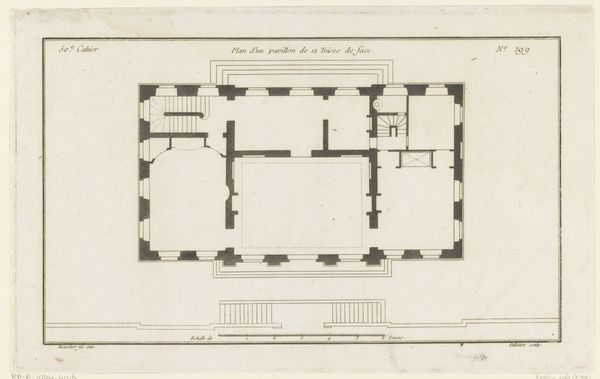
drawing, print, paper, engraving, architecture
#
drawing
#
baroque
# print
#
paper
#
geometric
#
cityscape
#
history-painting
#
engraving
#
architecture
Dimensions: height 530 mm, width 339 mm
Copyright: Rijks Museum: Open Domain
Editor: This is "Plattegrond van de Dom van Milaan," a drawing and print from sometime between 1723 and 1766 by Marc Antonio dal Re. It's a floor plan of the Milan Cathedral. What immediately strikes me is the intricacy of the lines, almost like a complex geometric puzzle. What stands out to you in terms of its structure and composition? Curator: The power of this image lies precisely in the interplay of line and form. Observe how dal Re meticulously renders the architectural blueprint. The network of lines establishes a rhythm, a sequence of repeated elements which are interspersed by geometric changes that encourage a sense of expansion and contraction. This interplay gives the drawing its visual energy. What compositional choices direct our eye? Editor: I notice that the central area is more densely detailed than the outer edges. The lines radiate outwards, creating a visual hierarchy. The geometric progression creates a sort of structured viewing experience. Would you agree that the details in the core speak to a deeper reading beyond just architectural representation? Curator: Precisely. The dense ornamentation at the heart of the structure isn't just decorative, but speaks to the architectural logic. Note how he utilizes the print medium’s inherent capacity for linearity to underscore architectural relationships. Do you find that the Baroque stylistic choice enriches your perspective? Editor: Definitely. Knowing it’s Baroque allows me to see how the embellishments build depth through complex pattern. Looking closely, I'm impressed by how much the medium impacts the geometrical structures depicted here. It reveals so much about artistic, historical, and technological conditions. Curator: Yes, each component contributes to our experience, influencing and molding the viewer's eye. A fascinating example of architectural art through the close combination of media, artistic flourish, and geometric principle. Editor: I see now how important it is to focus on the details themselves. This work exemplifies how form communicates intention, not just information.
Comments
No comments
Be the first to comment and join the conversation on the ultimate creative platform.
